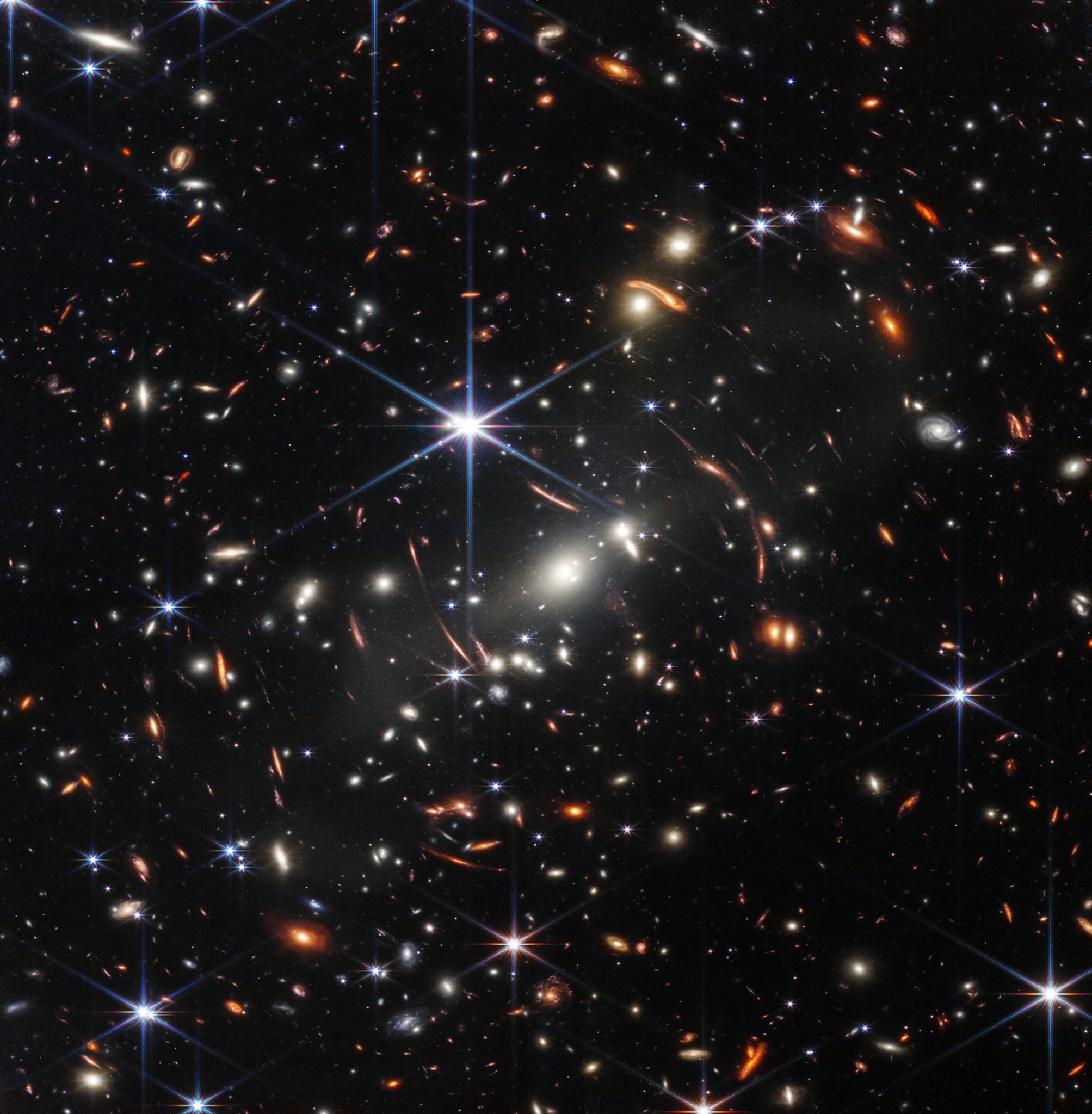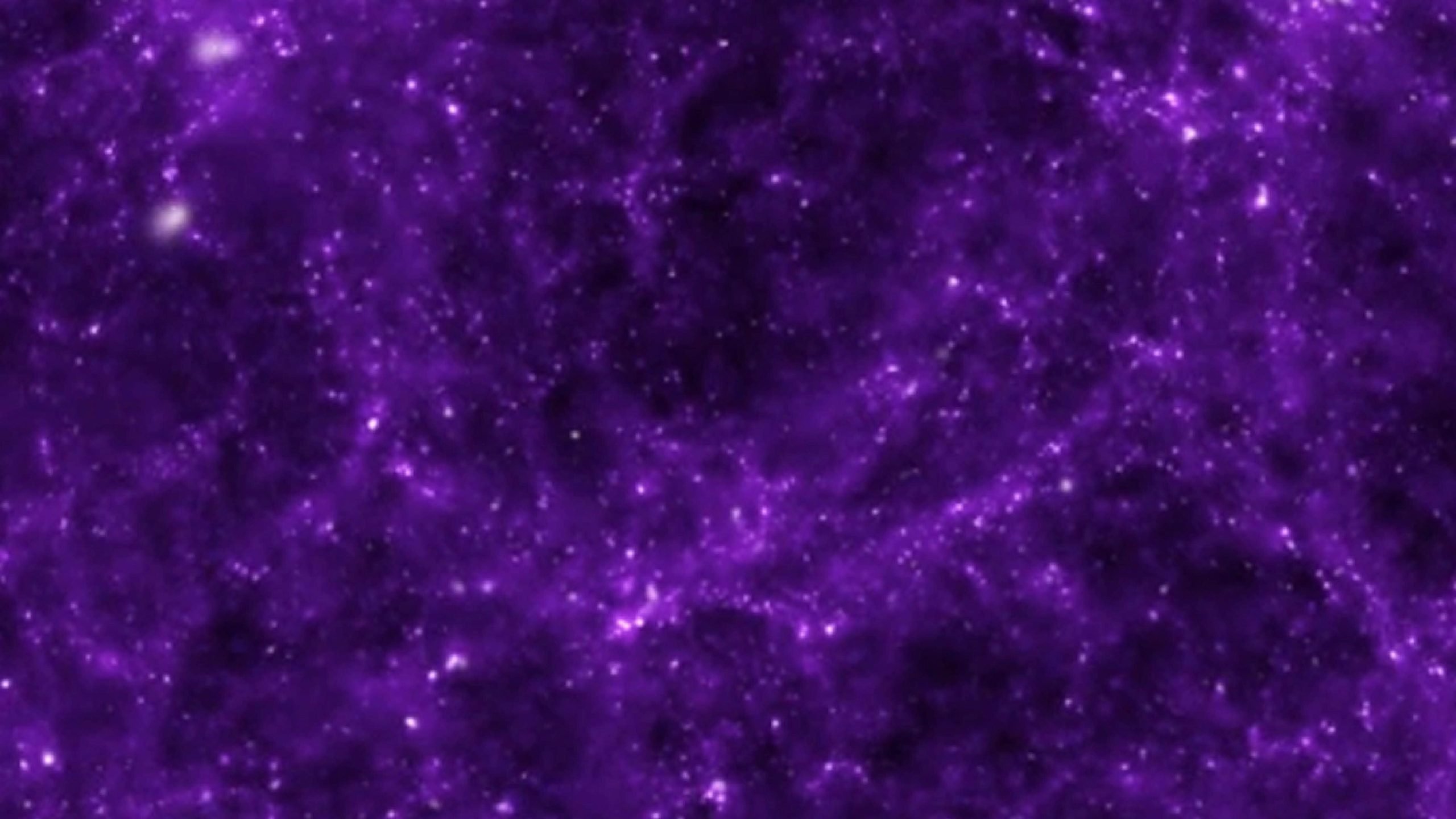Ilustración de energía oscura. Crédito: Frank Summers Visualization, Instituto de Ciencias del Telescopio Espacial. Simulación por Martin White, UC Berkeley y Lars Hernquist, Universidad de Harvard
¿Podría resolverse uno de los mayores acertijos de la astrofísica reelaborando la teoría de la gravedad de Albert Einstein? Todavía no, según un nuevo estudio en coautoría de[{» attribute=»»>NASA scientists.
The universe is expanding at an accelerating rate, and physicists don’t know why. This phenomenon seems to contradict everything scientists understand about gravity’s effect on the cosmos: It’s as if you threw an apple in the air and instead of coming back down, it continued upward, faster and faster. The cause of the cosmic acceleration, dubbed dark energy, remains a mystery.
A new study marks the latest effort to determine whether this is all simply a misunderstanding: that expectations for how gravity works at the scale of the entire universe are flawed or incomplete. This potential misunderstanding might help researchers explain dark energy. However, the study – one of the most precise tests yet of Albert Einstein’s theory of gravity at cosmic scales – finds that the current understanding still appears to be correct. The study was from the international Dark Energy Survey, using the Victor M. Blanco 4-meter Telescope in Chile.
The results, authored by a group of scientists that includes some from NASA’s Jet Propulsion Laboratory (JPL), were presented Wednesday, August 24, at the International Conference on Particle Physics and Cosmology (COSMO’22) in Rio de Janeiro. The work helps set the stage for two upcoming space telescopes that will probe our understanding of gravity with even higher precision than the new study and perhaps finally solve the mystery.

This image – the first released from NASA’s James Webb Space Telescope – shows the galaxy cluster SMACS 0723. Some of the galaxies appear smeared or stretched due to a phenomenon called gravitational lensing. This effect can help scientists map the presence of dark matter in the universe. Credit: NASA, ESA, CSA, and STScI
More than a century ago, Albert Einstein developed his Theory of General Relativity to describe gravity. Thus far it has accurately predicted everything from the orbit of Mercury to the existence of black holes. But some scientists have argued that if this theory can’t explain dark energy, then maybe they need to modify some of its equations or add new components.
To find out if that’s the case, members of the Dark Energy Survey looked for evidence that gravity’s strength has varied throughout the universe’s history or over cosmic distances. A positive finding would indicate that Einstein’s theory is incomplete, which might help explain the universe’s accelerating expansion. They also examined data from other telescopes in addition to Blanco, including the ESA (European Space Agency) Planck satellite, and reached the same conclusion.
Einstein’s theory still works, according to the study. So no there’s no explanation for dark energy yet. However, this research will feed into two upcoming missions: ESA’s Euclid mission, slated for launch no earlier than 2023, which has contributions from NASA; and NASA’s Nancy Grace Roman Space Telescope, targeted for launch no later than May 2027. Both telescopes will search for changes in the strength of gravity over time or distance.
Blurred Vision
How do scientists know what happened in the universe’s past? By looking at distant objects. A light-year is a measure of the distance light can travel in a year (about 6 trillion miles, or about 9.5 trillion kilometers). That means an object one light-year away appears to us as it was one year ago, when the light first left the object. And galaxies billions of light-years away appear to us as they did billions of years ago. The new study looked at galaxies stretching back about 5 billion years in the past. Euclid will peer 8 billion years into the past, and Roman will look back 11 billion years.
The galaxies themselves don’t reveal the strength of gravity, but how they look when viewed from Earth does. Most matter in our universe is dark matter, which does not emit, reflect, or otherwise interact with light. While physicists don’t know what it’s made of, they know it’s there, because its gravity gives it away: Large reservoirs of dark matter in our universe warp space itself. As light travels through space, it encounters these portions of warped space, causing images of distant galaxies to appear curved or smeared. This was on display in one of first images released from NASA’s James Webb Space Telescope.
Este video explica el fenómeno llamado lente gravitacional, que puede hacer que las imágenes de las galaxias parezcan deformadas o manchadas. Esta distorsión es causada por la gravedad, y los científicos pueden usar el efecto para detectar materia oscura, que no emite ni refleja luz. Crédito: Centro de Vuelo Espacial Goddard de la NASA
Los científicos del Dark Energy Survey buscan distorsiones más sutiles en las imágenes de las galaxias debido al espacio de flexión de la materia oscura, un efecto llamado débil. lente gravitacional. La fuerza de la gravedad determina el tamaño y la distribución de las estructuras de materia oscura, y el tamaño y la distribución, a su vez, determinan qué tan deformadas nos parecen esas galaxias. Es así como las imágenes pueden revelar la fuerza de la gravedad a diferentes distancias de la Tierra y en tiempos lejanos a lo largo de la historia del universo. El equipo ahora ha medido las formas de más de 100 millones de galaxias, y hasta ahora las observaciones coinciden con lo que predijo la teoría de Einstein.
«Todavía hay espacio para desafiar la teoría de la gravedad de Einstein, a medida que las mediciones se vuelven cada vez más precisas», dijo la coautora del estudio Agnès Ferté, quien dirigió la investigación como investigadora postdoctoral en el JPL. “Pero todavía tenemos mucho que hacer antes de estar listos para Euclid y Roman. Por eso es fundamental seguir colaborando con científicos de todo el mundo en este tema, como hemos hecho con el Dark Energy Survey”.
Referencia: «Dark Energy Survey Year 3 Results: Constraints on extensions to ΛCDM with débil lensing and galaxy clustering» por DES Colaboración: TMC Abbott, M. Aguena, A. Alarcon, O. Alves, A. Amon, J. Annis, S Ávila, D. Bacon, E. Baxter, K. Bechtol, MR Becker, GM Bernstein, S. Birrer, J. Blazek, S. Bocquet, A. Brandao-Souza, SL Bridle, D. Brooks, DL Burke, H Camacho , A. Campos, A. Carnero Rosell, M. Carrasco Kind, J. Carretero, FJ Castander, R. Cawthon, C. Chang, A. Chen, R. Chen, A. Choi, C. Conselice, J. Cordero, M. Costanzi, M. Crocce, LN da Costa, MES Pereira, C. Davis, TM Davis, J. DeRose, S. Desai, E. Di Valentino, HT Diehl, S. Dodelson, P. Doel, C. Doux, A. Drlica-Wagner, K. Eckert, TF Eifler, F. Elsner, J. Elvin-Poole, S. Everett, X. Fang, A. Farahi, I. Ferrero, A. Ferté, B. Flaugher, P Fosalba, D. Friedel, O. Friedrich, J. Frieman, J. García-Bellido, M. Gatti, L. Giani, T. Giannantonio, G. Giannini, D. Gruen, RA Gruendl, J. Gschwend, G. Gutierrez, N Hamaus, I. Harrison, WG Hartley, K. Herner, SR Hinton, DL Hollowood, K. Honscheid, H. Huang, EM Huff, D. Huterer, B. Jain, DJ James, M. Jarvis, N. Jeffrey, T. Jeltema, A. Kovacs , E. Krause, K. Kuehn, N. Kuropatkin, O. Lahav, S. Lee, P.-F. Leget, P. Lemos, CD Leonard, AR Liddle, M. Lima, H. Lin, N. MacCrann, JL Marshall, J. McCullough, J. Mena-Fernández, F. Menanteau, R. Miquel, V. Miranda, JJ Mohr, J. Muir, J. Myles, S. Nadathur, A. Navarro-Alsina, RC Nichol, RLC Ogando, Y. Omori, A. Palmese, S. Pandey, Y. Park, M. Paterno, F. Paz- Chinchón, WJ Percival, A. Pieres, AA Plazas Malagón, A. Porredon, J. Prat, M. Raveri, M. Rodriguez-Monroy, P. Rogozenski, RP Rollins, AK Romer, A. Roodman, R. Rosenfeld, AJ Ross, ES Rykoff, S. Samuroff, C. Sánchez, E. Sanchez, J. Sanchez, D. Sanchez Cid, V. Scarpine, D. Scolnic, LF Secco, I. Sevilla-Noarbe, E. Sheldon, T. Shin , M. Smith, M. Soares-Santos, E. Suchyta, M. Tabbutt, G. Tarle, D. Thomas, C. A, A. Troja, MA Troxel, I. Tutusaus, TN Varga, M. Vincenzi, AR Walker, N. Weaverdyck, RH Wechsler, J. Weller, B. Yanny, B. Yin, Y. Zhang y J. Zuntz, 12 de julio de 2022, Astrofísica> Cosmología y Astrofísica No Galáctica.
arXiv: 2207.05766

«Maven de internet exasperantemente humilde. Comunicadora. Fanático dedicado al tocino.»
También te puede interesar
-
La NASA está cerca de decidir qué hacer con la problemática nave espacial Starliner de Boeing
-
Estas imágenes en primer plano del Sol son tan locas que no creerás que son reales
-
Científicos reales vivieron durante un año en un Marte falso en un cobertizo en Texas
-
Una serpiente de 34 millones de años descubierta en Wyoming cambia nuestra comprensión de la evolución
-
Los chimpancés comparten el estilo de conversación «apresurado» de los humanos

